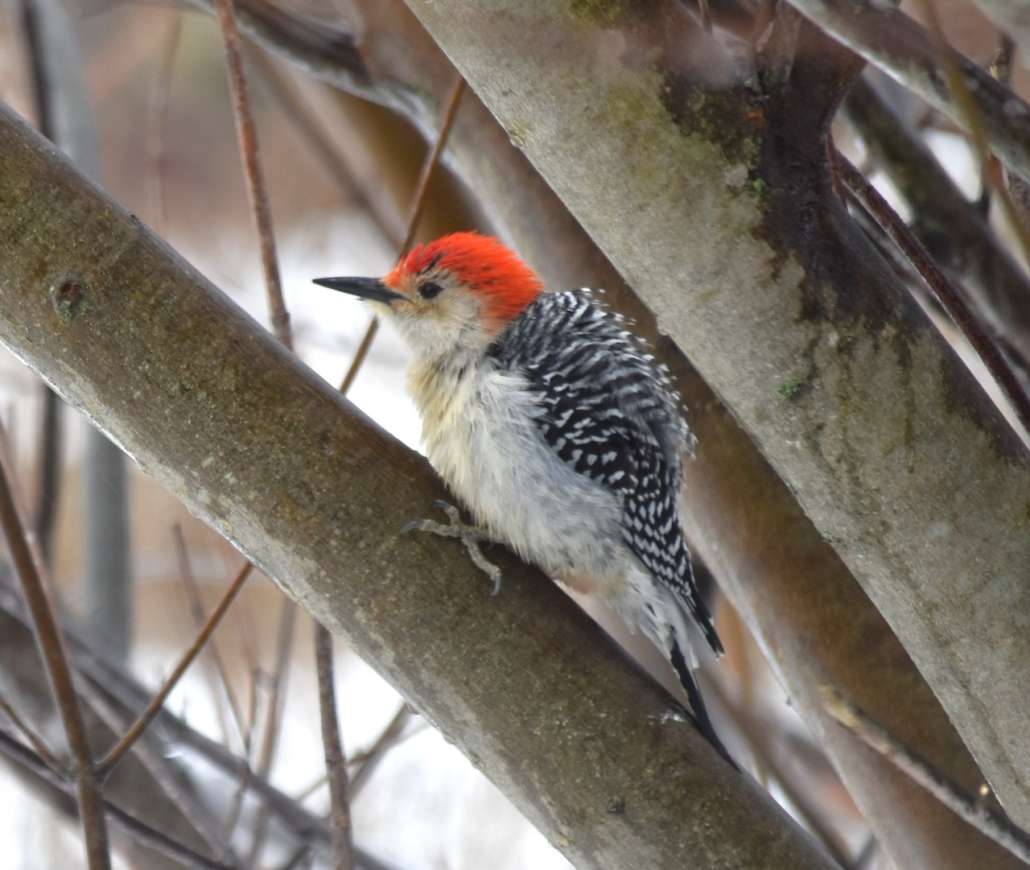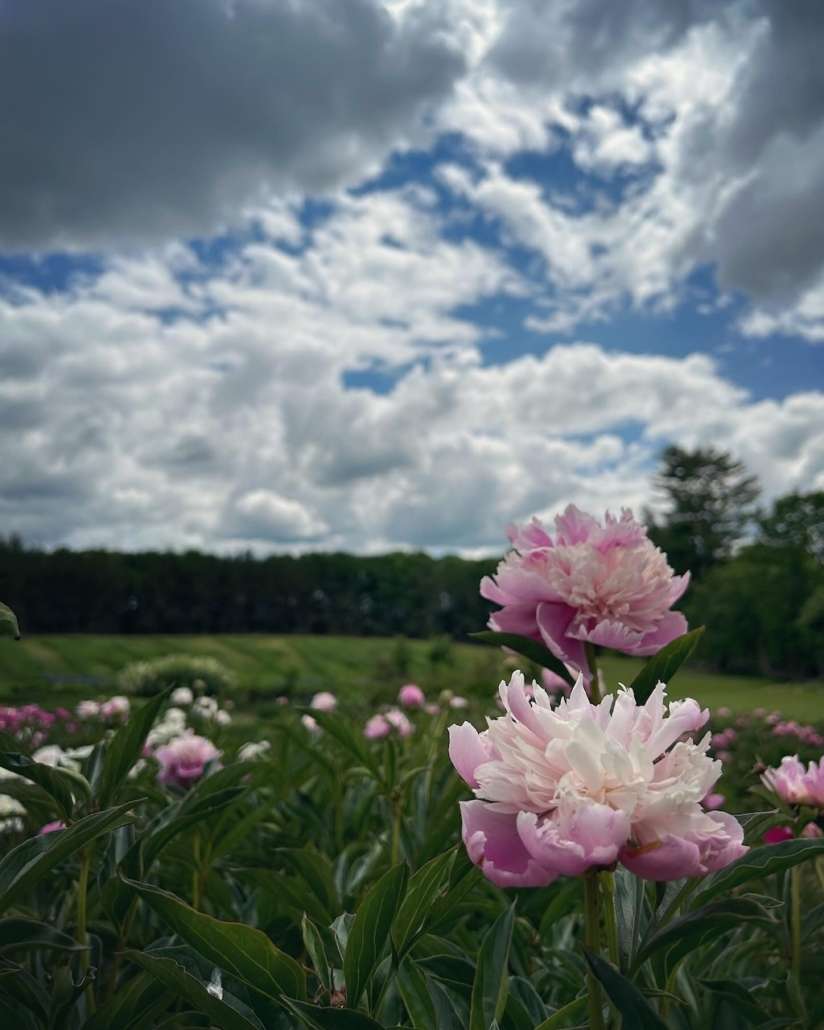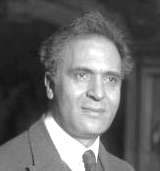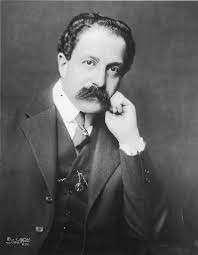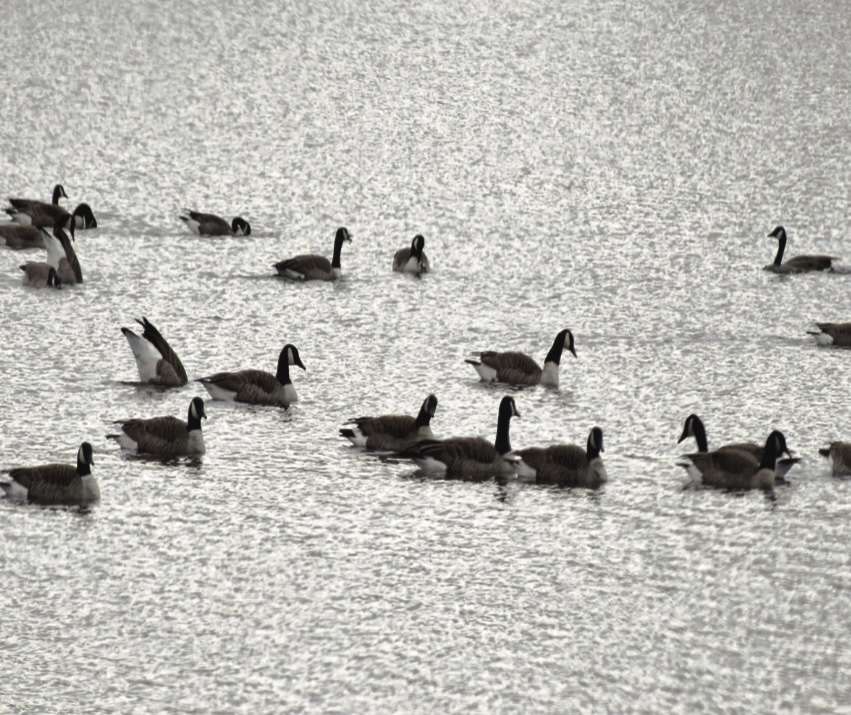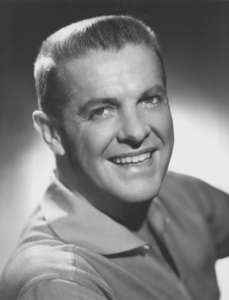GROWING YOUR BUSINESS: Your ideal customer to grow your business
/0 Comments/in Growing Your Business/by Dan Beaulieu
 by Dan Beaulieu
by Dan Beaulieu
Business consultant
One of the most important aspects of growing a successful business is to have a complete understanding of who your customers are. You need to know everything possible about the people you are selling your products and services to.
Look, chances are you started a business because you saw a need, a need that had to be met. Most business start that way. But the next thing you have to know is who has that need for your product and service, and why do they need it?
It’s your job as a business owner to develop a complete “Ideal Customer Profile” of who your customers are, what they look for in the type of business you have and what makes them prefer one company over another.
This means you have to study your current customers to discover why they are your customers, what pleases them and what doesn’t, and that will help you create the idea customer profile.
Let’s say, for example, you specialize in landscaping, especially stonework landscaping. To develop your ideal customer profile study, your past and current customers and ask these questions:
• What do they have in common?
• What types of projects are the most popular?
• Stone walls?
• Pool surrounds?
• Retaining walls?
• Patios?
• Flower beds?
• What projects are the most profitable?
• What are your customers demographics?
• Age?
• Income?
• Neighborhood?
• Type of home?
• Ask yourself what kind of customers do you like dealing with?
• Which value what you do?
• Which know what they want?
• Which trust you enough to take your suggestions?
• Which are you most successful with?
• Which appreciate and value what you do?
• Which are customers for life calling you year after year with new projects?
Once you have accumulated all of this data, you can compile it and have a very good profile of your ideal customer, and an even better idea of how to market to that ideal customer, including knowing:
• What kind of advertising you should be doing?
• Local newspapers?
• Which do they read?
• Television or radio?
• What do they watch or listen to?
• Websites and social media
• Are they online?
• Do they use Google?
• Door to door flyers?
• Will word of mouth work?
• Customer referrals?
• Direct mailing or emailing?
• Are they analog or digital when it comes to getting messages?
All of these things matter when you are trying to gain new customers. You have to create your ideal customer profile and use it for your marketing, to make sure you are targeting the right customers. For example, if you are selling landscaping or stone scaping you are wasting your time trying to sell to people who live in town houses or retirement communities. On the other hand, you might find out who has just had a pool put in and contact them about landscaping around that pool. Or find you might find who just bought a house in town; or had one built and contact them. Both of these are a matter of public record so it’s not that difficult to find these customers.
But whatever you do if you want to be successful you have to do your homework. Develop your ideal customer profile and then market to potential customers that fit that profile and you’ll always be growing your business.
REVIEW POTPOURRI – Conductors: Charles Munch, Walter Bruno, Pierre Monteux
/0 Comments/in Review Potpourri/by Peter Cates by Peter Cates
by Peter Cates
Charles Munch, Walter Bruno, Pierre Monteux
Continuing with my on-going fascination with the great conductors of the past, I encountered a group photo of Charles Munch (1891-1968), Bruno Walter (1876-1962), and Pierre Monteux (1875-1964), who established the still existing Domaine School in Hancock for conducting students just over 80 years ago. The occasion for this get together at Carnegie Hall’s green room was all three maestros conducting the NBC Symphony in a 1958 memorial concert for its former music director Arturo Toscanini (1867-1957), each of them featured in one piece.
Youtubes of each of the three conductors guesting with the NBC include a very good late ‘30s Mahler 1st Symphony, with Walter ; a 1953 Beethoven 7th with Monteux; and a Ravel Le Tombeau de Couperin with Munch also from 1953, along with several others.
The NBC Symphony was created as a radio orchestra in order to lure Toscanini back to the United States from his native Italy where he was living since resigning as music director of the New York Philharmonic in 1936 after seven brilliant years there. The NBC broadcasts have never been surpassed for long-term popularity.
However, by 1954, Toscanini, although still in good shape, was pressured to resign and his last three years would see a decline in health.
According to Monteux’s daughter, Toscanini and her father admired each other’s art; while Walter and Toscanini had been friends for decades, the older man once stated that “whenever Walter conducts a piece, he melts all over the place.” Munch appeared several times with NBC at Toscanini’s invitation.
I recently listened to a Columbia Masterworks cassette, MYT 38473, of Bruno Walter conducting the Columbia Symphony Orchestra in Mozart’s Linz and Prague Symphonies. This orchestra was a studio group assembled around 1959 to 1960 and consisting of Los Angeles Philharmonic musicians when Walter was living out his remaining years in Beverly Hills.
The Linz, #36 among the 41, is a sweetly melodic and graceful work suited nicely to Walter’s “melting” music making; the more perky Prague, #38, receives a decent performance but lacks the perky excitement of a 1960 London Symphony recording conducted by Peter Maag. Still, this is a very enjoyable pair of performances that have worn well.
A highly recommended performance from Pierre Monteux is a Brahms Second Symphony, the first of four different recordings, in which he led the San Francisco Symphony in a 1945 Victor Red Seal recording. This symphony has a sunny outdoorsy quality and Monteux drew out its beauties with a very exquisitely phrased spontaneity.
A favorite Munch recording from the mid-’60s is a Nonesuch LP featuring two different Iberias, the first by French composer Claude Debussy (1862-1918) and the second by a native of Spain’s Catalonia, Isaac Albeniz (1860-1909). Munch conducted the Debussy Iberia with a special flair for its pulsating rhythms and colorful instrumental effects and achieved a similar magic with Albeniz . As far as I know, Albeniz and Ernesto Halffter are the only two Spanish composers Munch ever conducted.
The album jacket mentions that Albeniz composed his Iberia in Paris whereas Debussy only spent a few hours in Spain to witness a bullfight, but the Spanish composer Manuel de Falla adored Debussy’s Iberia because its music evoked the Spain he knew so well.
I own many Toscanini recordings of outstanding merit and one I have returned to often during the last 40 years is a 1947 broadcast of French composer Hector Berlioz’s complete Romeo and Juliet Symphony which RCA Victor Red Seal first issued in 1967 and, as far as I know, still available on CD and accessible on YouTube.
FOR YOUR HEALTH: The Role of Hydration in Maintaining Healthy Airways
/0 Comments/in For Your Health/by Website Editor Keeping yourself well-hydrated is vital for your overall well-being, including ensuring your airways are clear and functioning smoothly. When you don’t drink enough water, your body might produce more mucus, which gets thicker and can challenge breathing. By staying hydrated, you’re doing your respiratory system a big favor, helping it work at its best. Continue reading to see how sipping that extra glass of water can be a game-changer for your airway health, based on scientific facts and expert advice.
Keeping yourself well-hydrated is vital for your overall well-being, including ensuring your airways are clear and functioning smoothly. When you don’t drink enough water, your body might produce more mucus, which gets thicker and can challenge breathing. By staying hydrated, you’re doing your respiratory system a big favor, helping it work at its best. Continue reading to see how sipping that extra glass of water can be a game-changer for your airway health, based on scientific facts and expert advice.
Understanding the Airways
Before we explore the relationship between hydration and airway health, it’s crucial to understand the airways and their significance. The airways consist of the nose, throat, trachea, and lungs. They pass air from the external environment to the lungs, facilitating essential gas exchanges.
Why Hydration Matters for Airways
Staying hydrated keeps the mucus in your airways thin and flowing, preventing buildup and infections. Dehydration thickens this mucus, hindering expulsion and increasing the risk of inflammation and respiratory issues. Hydration also preserves the mucosal linings, offering protection against infections.
Practical Tips for Staying Hydrated
● Drink Enough Water: The exact amount of water needed varies from person to person based on factors like age, health conditions, climate, and activity levels. However, most experts recommend drinking around eight glasses (64 oz) of water daily to maintain proper hydration.
● Monitor Hydration Levels: Pay attention to signs of dehydration, such as dry mouth, fatigue, and dark-colored urine. One easy way to check your hydration levels is to monitor the color of your urine. Pale or light yellow urine indicates you’re well-hydrated, while darker yellow or amber urine means you need more fluids.
● Incorporate Hydrating Foods: Incorporating hydrating foods into your diet primarily involves incorporating fruits and vegetables rich in water. Watermelon, strawberries, cantaloupe, peaches, and oranges are excellent choices, as they contain over 85 percent water, making them incredibly hydrating. Similarly, vegetables such as cucumbers, lettuce, zucchini, celery, and bell peppers are also known for their high water content.
Help Us Promote the Benefits of Airway Health
Join the Foundation for Airway Health in its mission to ensure everyone understands how breathing impacts health and development. Your donation allows us to spread the word about the importance of breathing for overall health, conduct valuable research, and ensure access to care.
SCORES & OUTDOORS – So many wolf questions: here are some answers
/1 Comment/in Scores & Outdoors/by Roland D. Hallee by Roland D. Hallee
by Roland D. Hallee
With the increasing number of wolf sightings reported to me, I found it necessary to revisit the subject. Thanks to John Glowa, of the Maine Wolf Coalition, I will share with you the contents of an email he submitted to The Town Line.
Wolves are attempting to recolonize the northeast after a century’s absence. The closest acknowledged wolf populations are in Québec, just 60 miles from New York and 75 miles from Maine. Thousands more wolves live in southern and central Canada and the Great Lakes states, well within the 1,000+ mile distance that wolves have been known to travel during dispersal.
Dispersal is simply a young wolf leaving its pack’s territory in search of a mate and a territory of its own. These dispersing young wolves are often called “lone” wolves. Just as we humans do, nearly all young wolves leave home to live and possibly raise a family of their own.
Wolves are an essential part of a healthy ecosystem. In the northeast, the lack of wolves after we exterminated them in the 19th century allowed coyote/wolf hybrids to move in from Canada where coyotes and wolves interbred. The offspring of these hybrid animals crossed the St. Lawrence River more than a century ago and their populations grew. Their range expanded because they had no competition from wolves for food and territory. They now live throughout the northeast and maritime Canada including Prince Edward Island and Newfoundland. These coyote/wolf hybrids are believed to have established a population in Maine by the 1930s and now number in the thousands in Maine alone.
It is important to know that there are no coyotes in the northeast U.S. All large canids are either coyote/wolf hybrids or wolves. The northeast canid referred to as a coyote or eastern coyote is not a species but is a coyote/wolf hybrid.
In 1993, a young female wolf was killed by a bear hunter in northern Maine. Since then, a dozen or so wolves have been documented killed by hunters or trappers south of the St. Lawrence River. Most of these were large animals that were primarily gray wolf. It is believed that Maine once had both gray wolves and eastern wolves. Gray wolves are larger animals – the animals that we normally think of as wolves. They generally range from 65-90+ pounds and prey primarily on moose, deer and beaver. Eastern wolves are smaller and generally range from 45-65 pounds. They seldom prey on moose, but do prey on deer, beaver and smaller animals. They will also eat berries, and their diet is similar to that of coyote/wolf hybrids. These animals can easily be confused with “coyotes” and it is likely that some of Maine’s eastern wolves are killed by hunters and trappers but are unreported due to their smaller size. Eastern wolves are now considered a threatened species in Canada. The U.S. government does not recognize the eastern wolf as a species, but rather as a gray wolf. This position is being reviewed and is subject to change. In 2019, the Maine Wolf Coalition collected a scat in northern Maine that was documented through DNA analysis to have come from an eastern wolf.
Wolves in Maine continue to be protected by federal law, but that law is not enforced. It is impossible to tell the difference between a “coyote” and an eastern wolf just by sight. The State of Maine encourages the killing of wolves by encouraging the killing of “coyotes”. The State of Maine wants nothing to do with wolves and excludes them from its State Wildlife Action Plan (SWAP). SWAPs are revised every ten years, and the 2025 SWAP is presently being written by various state agencies in order to qualify for federal funding for the state.
On a federal level, the U.S. Fish and Wildlife Service (Service) has tried and failed for years to have wolves removed from the list of endangered species. Multiple losses in court have resulted in a recent proposal by the Service to develop a National Gray Wolf Recovery Plan. That plan is supposed to be rolled out by late 2025. Wolf advocates including the Maine Wolf Coalition (MWC) recently met with representatives of the service to urge the agency to include the northeast in the recovery plan and to offer our assistance in developing it. Our more than 30 years of wolf advocacy have accumulated a wealth of information about the status of wolves and the potential for wolf recovery in the northeast and Canada south of the St. Lawrence River.
A major recent development has been the establishment of the Northeast Wolf Recovery Alliance (NEWRA) in 2023. MWC is a charter member of NEWRA which includes as members individuals and organizations from New York, Rhode Island, Massachusetts, Vermont, New Hampshire, Maine, Ontario and Québec as well as two national wildlife advocacy organizations. We have come to realize that it is essential for the U.S. and Canada to work together for wolf recovery in the region because wolves do not recognize invisible national boundaries.
Since 2019, MWC has actively been collecting canid scat across Maine for DNA analysis. This is work that neither the state of Maine nor the service is doing. We presently have nearly 200 scats at Michigan Technological University awaiting analysis. We have also been collecting some amazing trail camera photos and videos of wolflike canids from the Maine-New Hampshire border to far northern Aroostook County. We hope to document the status of wolves in Maine to try to force the state and federal governments to actively work to protect and recover them.
We have believed and we continue to believe that wolf recovery in the northeast will happen if we simply let it happen. Wolves in Canada and the northeast need real protection from hunters and trappers. We have never advocated reintroducing or bringing wolves into the northeast and releasing them. The evidence tells us that wolves are already here and that they will recover…if we only let them.
Roland’s trivia question of the week:
What country has competed the most times in the Summer Olympics, yet hasn’t won a gold medal?
Give Us Your Best Shot! for Thursday, August 8, 2024
/0 Comments/in Give Us Your Best Shot!/by Website EditorTo submit a photo for this section, please visit our contact page or email us at townline@townline.org!
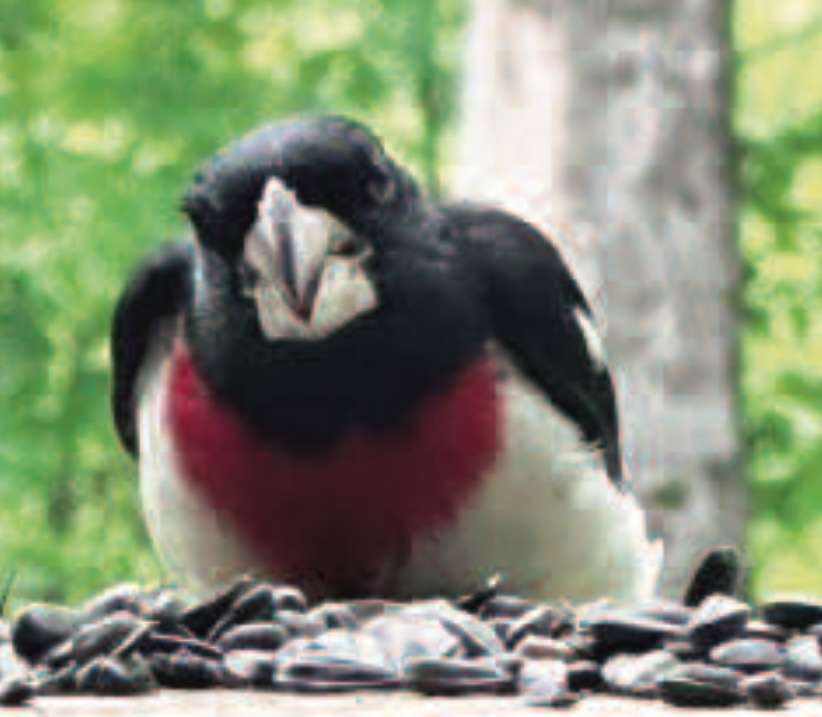
CLOSE UP: Chris Diesch, of Palermo, reported Mr. Grosbeak finally got brave enough to eat seeds off the farmer’s porch rail just a few feet away.
REVIEW POTPOURRI: Eli Oberstein
/0 Comments/in Review Potpourri/by Peter Cates by Peter Cates
by Peter Cates
Eli Oberstein
Recording producer Eli Oberstein (1901-1960) was mentioned some months ago in a column about early 78 and LP budget labels. Oberstein had worked for Victor during the 1930s and helped start its 35 cent Bluebird label with country music artists and then bandleaders Glenn Miller and Artie Shaw, which was hugely successful when 78s cost a dollar or more.
Unfortunately, he was fired for some shady business dealings, and began his own company, United States Record Corporation, in 1939, which had various inexpensive subsidiary labels such as Varsity.
A year later, the company went bankrupt. In 1948, he revived the Varsity label and began issuing LPs at el cheapo prices. The source material was often pirated from other labels and the artists listed were more often than not pseudonyms.
Lately, I have listened several times to a ten-inch LP from the label (Varsity LP 27) released in 1951. The music consists of George Bizet’s L’Arlesienne Suite #1 and Ambrose Thomas’s Mignon Overture.
Despite the very scratchy surface noise of my well worn copy and the primitive fidelity of the record itself, I enjoy it immensely. The Bizet music is equal in vibrantly colorful and beguiling sonorities and rhythms to the composer’s masterpiece opera Carmen while the Thomas Overture is a graceful and melodic piece more often performed by itself while the opera Mignon is rarely staged these days.
The listed National Opera Orchestra is non-existent; the unknown conductor and musicians played with tremendous power and beauty.
Gospel Greats
A 1987 cassette (Deluxe DLX-7791), 24 Gospel Greats, features George Jones (1931-2013) singing a generous selection of sacred tunes with his uniquely individualistic honky tonk vocalism that was exemplified in such secular country classics as the 1959 White Lightning.
They include I’ll Fly Away, Leaning on the Everlasting Arms (a favorite of the murderous preacher portrayed so well by Robert Mitchum in 1955’s The Night of the Hunter), The Old Rugged Cross and a large number of unfamiliar songs.
Penguin Dictionary
The Penguin Dictionary of Quotations has one from the long forgotten Samuel Smiles (1812-1904)- “We often discover what will do, by finding out what will not do; and probably he who never made a mistake never made a discovery.”
Bob Cummings
The late ‘50s comedy show Love That Bob, starred Bob Cummings (1910-1990) as a photographer who is also an insatiable ladies man and who is being constantly haranged by his widowed sister to settle down. He also doubles as the photographer’s grandfather who is also a ravenous flirt.
The hilarious comic situations and delivery make it one of the half dozen most incredibly entertaining comedy shows in TV history.
.
FOR YOUR HEALTH – Beyond the Scale: Learn the Facts About Obesity
/0 Comments/in For Your Health/by Website Editor Obesity is a chronic disease that affects some ethnic and racial groups more than others but anyone can take steps to combat it.
Obesity is a chronic disease that affects some ethnic and racial groups more than others but anyone can take steps to combat it.
(NAPSI)—Obesity is a life-long health problem that affects more than 42% of American adults. Most people don’t know that obesity is a disease and impacts some ethnic and racial groups more than others, including 47% of Hispanic American adults. Recent news stories around new anti-obesity medications have created many questions about obesity and its treatments.
Here are some important facts to know about obesity:
• Obesity does not happen from poor lifestyle choices. Lack of willpower is often blamed as the main cause for weight gain. However, research has shown that obesity is a complex disease with many factors causing weight gain. It also affects many parts of the body and can increase your risk of developing serious health conditions, such as diabetes, heart disease, cancer and liver disease.
• Losing weight can reverse certain health conditions caused by obesity. Losing weight can have a positive impact on your overall health. Even a small amount of weight loss can ease joint pain, lower your chances of cancer and lower your blood pressure. It can also help improve certain digestive issues caused by obesity, like acid reflux or GERD (gastroesophageal reflux disease). Weight loss can also lessen harmful fat in your liver, and the swelling and scarring that happens with liver disease.
• Many doctors can provide obesity treatments that will help. Because obesity impacts many body systems, different types of doctors can help with prevention and treatment. Gastroenterologists, for example, can help patients with obesity-related digestive health issues, such as reflux or liver disease, that can be treated or prevented through weight management.
• There are many helpful ways patients can try to manage their weight. Your health care provider can help you decide which treatments are best for you, such as lifestyle changes, prescription drugs, endoscopic procedures and/or surgery.
“As a gastroenterologist, patients often come to my office for serious health issues such as liver disease, which they don’t realize is caused by obesity and can be prevented or reversed by staying at a healthy weight,” said Dr. Andres Acosta, an obesity doctor and gastroenterologist at Mayo Clinic in Rochester, Minnesota. “This is very important for Hispanic American adults who have more obesity and liver disease than other ethnicities. Keeping up a healthy weight is an important way to improve obesity-related health issues and prevent or reverse certain conditions before they become severe.”
For more information on obesity, how it affects your overall health, and available treatment options and how to access them, visit the American Gastroenterological Association’s Obesity Resource Center at https://patient.gastro.org/obesity/.
SMALL SPACE GARDENING: Harvest and enjoy garden-fresh cucumbers
/0 Comments/in Small Space Gardening/by Melinda Myers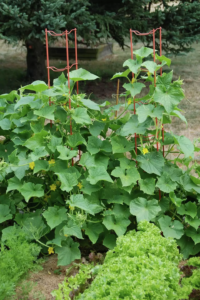
 by Melinda Myers
by Melinda Myers
Low in calories and versatile, cucumbers can flavor beverages, perk up a salad, served as a snack, or made into pickles. This popular vegetable is a good source of fiber, potassium, and vitamin K. Plus, they have a high water content, making them a mild diuretic to help in weight loss and reduce blood pressure. To ensure the best flavor and greatest nutritional value, grow your own or purchase cucumbers fresh from the farmer’s market.
Harvest cucumbers or purchase them based on the variety and intended use. Pick the fruit when it is 1½ to 2½ inches long if you plan on making sweet pickles. If dill pickles are on the menu, allow the cucumbers to grow bigger to about three to four inches.
Wait to harvest those you plan on using fresh in salads, beverages, or for snacking. Harvest slicing cucumbers when the skin is firm, bright green, and the fruit is six to nine inches long. You can leave burpless-type cucumbers on the vine a bit longer. They have been bred to maintain their mild flavor when harvested at 10 to 12 inches in length.
Go big and impress your family with the crisp, mild flavor of the long Japanese cucumber. Pick these when they are 12 to 18″ long. Their flavor remains mild and the skin is easy to digest despite the longer size.
Misshapen and bitter-flavored cucumbers are usually the result of drought, improper fertilization, and large fluctuations in temperature. These are safe to eat but may not have the best flavor.
The bitter flavor in cucumbers is caused by the cucurbitacin B and C in the plant moving from the leaves, stems, and roots into the fruit when the plants are under stress. Remove about an inch of the stem end and peel where these compounds concentrate to improve the flavor. Consider growing varieties that are typically less bitter like Sweet Slice, Sweet Success, and Marketmore 76.
Compost poor quality fruit that are not suitable for eating. Then adjust your care to ensure better quality cucumbers for the remainder of the season.
Consider making a second planting if space and time allow. Many cucumbers reach maturity in 60 days or less. Calculate the days remaining until the first fall frost to determine if you have enough time to plant, grow, and harvest a second cucumber crop.
Grow the All-America Selections winner Green Light, ready to harvest in as few as 37 to 42 days. Train the long vines on a pole or trellis to save space and for easier picking. Harvest the fruit when three to four inches long for great taste without peeling.
Try growing Patio Snacker cucumber if space is limited. This compact plant produces an abundance of six- to seven-inch fruit in about 50 days.
Extend the season indoors with the new Kitchen mini Quick Snack cucumbers. These small plants will grow indoors in a sunny window, with no pollination needed, and produce fruit that tastes best when picked at 2½ inches long.
No matter how you plan to enjoy this multi-purpose vegetable, harvest it at just the right time for the best flavor and intended use.
Melinda Myers has written over 20 gardening books, including Midwest Gardener’s Handbook, 2nd Edition and Small Space Gardening. She hosts The Great Courses “How to Grow Anything” instant video and DVD series and the nationally syndicated Melinda’s Garden Moment radio program. Myers is a columnist and contributing editor for Birds & Blooms magazine. Myers’ website is www.MelindaMyers.com.
SCORES & OUTDOORS: Katydids are considered gentle insects not harmful to humans
/0 Comments/in Scores & Outdoors/by Roland D. Hallee by Roland D. Hallee
by Roland D. Hallee
Last week, a friend of mine texted me with the photo of a cricket-like bug for identification. Before I could get back to him, he ID it as a katydid. A few days later, I saw one hanging on the screen door at camp. It had been a while since I had seen one.
Katydids are a family of insects related to grasshoppers and crickets. They’re also called bush crickets or long-horned grasshoppers in some regions. There are more than 6,000 types of katydids, and they’re found on every continent except for Antarctica. The vast majority of katydid species live in the tropical regions of the world. For example, the Amazon basin rain forest is home to over 2,000 species of katydids. However, katydids are found in the cool, dry temperate regions, as well, with about 255 species in North America.
Most types of katydids are green and have markings to help them blend in with leaves and other foliage. Like crickets and grasshoppers, they have long back legs to help them jump. They can rub their front wings together to make a loud ka-ty-did song that gives them their name. Some katydid songs, however, are at too high a frequency for human ears to hear.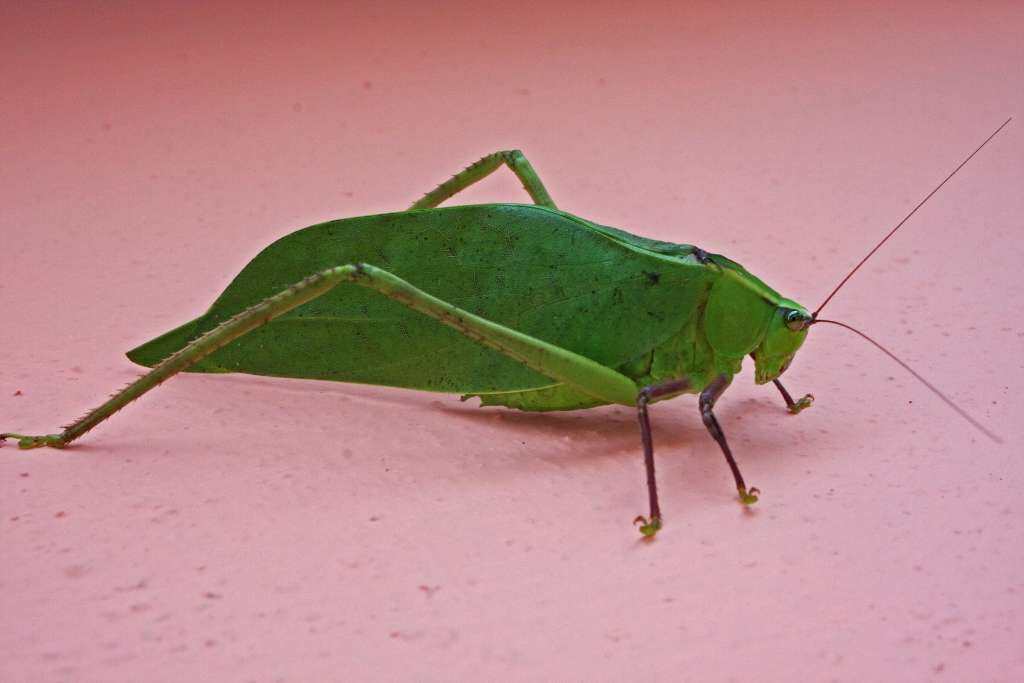
Katydids are usually considered gentle insects that aren’t harmful to humans. Some people consider them garden pests; however, they usually don’t cause serious damage to your plants or vegetables. The Common Garden Katydid is a quite common backyard buddy and garden visitor.
Many people even keep them as pets. In rare cases, larger types of katydid may pinch or bite if they feel threatened. Their bite is unlikely to break your skin and likely won’t be any more painful than a mosquito bite. You’re very unlikely to get bitten unless you’re handling them with your bare hands. It’s extremely unlikely that the bite will need medical attention. You can wash the area with soap and water and apply a cold compress if you have pain or swelling.
Katydids primarily eat leaves and grass. Along with crickets and grasshoppers, they may be attracted to the plants in your garden or any tall grass on your property. Katydids are nocturnal and are also attracted to bright lights at night.
One type of katydid found widely across North America, the broad-winged katydid, likes to eat the leaves of citrus trees and may be a pest for people with orchards.
You may not know much about katydids, probably because they are masters of camouflage. Their green colouring and leaf-like shape helps them blend into leafy surroundings, and they are most active at night. They may be tough to spot, but may be a lot more common than you think.
Katydids don’t have ears on their heads, but instead they have an ear called a ‘tympanum’ on each front leg, just below the knee. Up close, this looks like a hole in their leg.
The lifespan of a katydid is about a year, with full adulthood usually developing very late. Females most typically lay their eggs at the end of summer beneath the soil or in plant stem holes. The eggs are typically oval and laid in rows on the host plant.
When katydids go to rest during the day, they enter a diurnal roosting posture to maximize their cryptic qualities. This position fools predators into thinking the katydid is either dead or just a leaf on the plant. By flicking their wings open when disturbed, they use the coloration to fool predators into thinking the spots are eyes. This, in combination with their coloration mimicking leaves, allows them to blend in with their surroundings, but also makes predators unsure which side is the front and which side is the back.
They have polygamous relationships. The first male to mate is guaranteed an extremely high confidence of paternity when a second male couples at the termination of female sexual refractoriness. The nutrients that the offspring ultimately receive will increase their fitness.
The polygamous relationships of the katydids lead to high levels of male-male competition. Male competition is caused by the decreased availability of males able to supply nutrients to the females. Females produce more eggs on a high-quality diet; thus, the female looks for healthier males with more nutrition. Females use the sound created by the male to judge his fitness. The louder and more fluent the trill, the higher the fitness of the male.
When you think about it, there is a lot that goes on in the world of what we consider “just a bug.”
Roland’s trivia question of the week:
Which retired former Red Sox player is married to Olympic and World Cup soccer player Mia Hamm?
Interesting links
Here are some interesting links for you! Enjoy your stay :)Site Map
- Issue for April 3, 2025
- Issue for March 27, 2025
- Issue for March 20, 2025
- Issue for March 13, 2025
- Issue for March 6, 2025
- Issue for February 27, 2025
- Issue for February 20, 2025
- Issue for February 13, 2025
- Issue for February 6, 2025
- Issue for January 30, 2025
- Issue for January 23, 2025
- Issue for January 16, 2025
- Issue for January 9, 2025
- Issue for January 2, 2025
- Issue for December 19, 2024
- Issue for December 12, 2024
- Issue for December 5, 2024
- Issue for November 28, 2024
- Issue for November 21, 2024
- Issue for November 14, 2024
- Issue for November 7, 2024
- Issue for October 31, 2024
- Issue for October 24, 2024
- Issue for October 17, 2024
- Issue for October 10, 2024
- Issue for October 3, 2024
- Sections
- Our Town’s Services
- Classifieds
- About Us
- Original Columnists
- Community Commentary
- The Best View
- Eric’s Tech Talk
- The Frugal Mainer
- Garden Works
- Give Us Your Best Shot!
- Growing Your Business
- INside the OUTside
- I’m Just Curious
- Maine Memories
- Mary Grow’s community reporting
- Messing About in the Maine Woods
- The Money Minute
- Pages in Time
- Review Potpourri
- Scores & Outdoors
- Small Space Gardening
- Student Writers’ Program
- Solon & Beyond
- Tim’s Tunes
- Veterans Corner
- Donate


